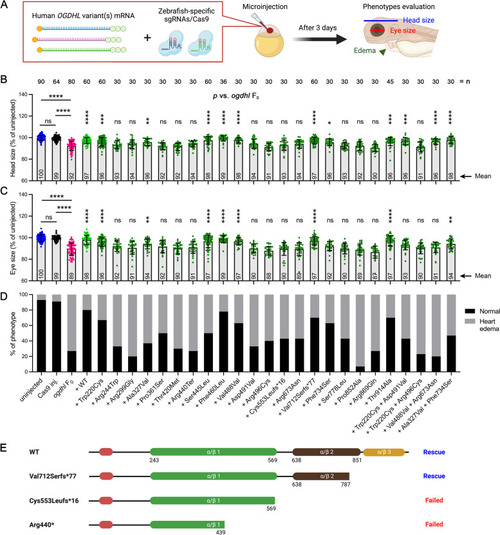
Functional characterization of human OGDHL variants in zebrafish model. A Experimental approach for characterizing functionality of human OGDHL variants. Human OGDHL variant mRNAs were mixed with synthetic zebrafish-specific ogdhl single-guide RNAs (sgRNAs) and Cas9 protein and microinjected into one-cell stage embryos, followed by phenotypic evaluation at 3 dpf. Blue line indicates head size measurement approach. Red line indicates eye size measurement. Green arrowhead indicates heart edema. B, C Head and eye size measurements were calculated as a percentage difference compared to the mean value of the uninjected embryos. Subsequently, the calculated measurements of uninjected, Cas9-injected, and ogdhl F0 embryos were compared. Additionally, the ogdhl F0 co-injected with either WT or mutated OGDHL mRNA were compared to the ogdhl F0 knockout embryos. Each dot represents one animal and the mean value of each group is indicated at the bottom of the respective bar in the figure. n = the number of embryos. Error bars = mean ± SD. Statistical significance was calculated by Brown–Forsthye and Welch’s ANOVA with Dunnett’s T3 multiple comparisons test: not significant (ns) p ≥ 0.05, *p < 0.05, **p < 0.01, ***p < 0.001, and ****p < 0.0001. Significances for all rescue experiments are in comparison to ogdhl F0. D The presence of the heart edema phenotype was calculated as a percentage of total embryos of each group. E The schematic of OGDHL truncating variants and the corresponding rescue experiment results
|

